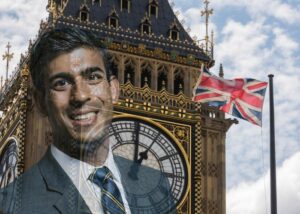Recently Netflix debuted a new documentary which plays around financial management, personal finance, how to manage debt, building wealth and achieving financial freedom. The documentary titled ‘Get Smart with Money’ features four famous financial advisors which are Paula Pant from affordanything.com, Ro$$ Mac, Mr Money Mustache or Pete Adeney and Tiffany Aliche from The Budgetnista.
Directed by Stephanie Soechtig, in 93 minutes, this documentary film highlights the process of 4 real persons or couples in correcting their financial literacy and how they manage their money and debt in the span of 1 year. It emphasizes the way of how people can take control of their fund and rebound from their typical American living paycheck-to-paycheck.
In the season of inflation, economic recession and interest rate hike, this documentary could be an eye-opener for people who suffer from the rising cost of living and actually want to change their financial status pursuing the FIRE (financial freedom early retirement).
If you don’t have time and chance to watch to this new Netflix documentary, here are the 6 mind-blown key takes from ‘Get Smart with Money’, in the hope of improving your financial status.
1. Save, Earn More & Invest
Teez Tabor, one of the individuals who needs help in managing his finances, is a football player who was playing for Detroit Lions before. His first paycheck was $1.6M, but couldn’t manage to save a larger portion of his income until he only left with $280,000 in his account. Shocked with the fact that only 2% of the black Americans had invested in the stock market, Teez was eager to jump into the stock markets with the help of Ro$$ Mac.
Teez realizes how he can save and invest the money that still he has left, in order to prepare him and his family for any future outcome. Ro$$ encourages Teez to be more proactive in earning more in his profession, aiming for the main player in the team, rather than the practise squad.
The important lesson here is to create as much longevity and stability of your finances before it’s too late. Ro$$ shows the way Teez could invest his money into stock index and equities such as the S&P 500 and Apple Inc.
It is evident from Teez’s story that achieving huge incomes is not the only objective and path to financial success. The objective is to put aside those funds and invest them for your future. It is better late than never in investing. Teez learns how to open a brokerage account and invest in the stock market for the first time taught by Ro$$ Mac.
2. Major Culprits : Housing, Transportation and Food
Most Americans have larger spending in these 3 items which are house, transportation and food. While, among those there, two of them (house and food) are actually the physiological needs of human beings, based on the Maslow’s Hierarchy of Needs.
Paula Pant advised one of the individuals who joined the challenge of this ‘Get Smart with Money’ documentary film, Lindsey. According to Paula, by reducing the spending of these 3, it will have a major impact on the finances of Lindsey. One of the best ways is to limit the eating out, and cook more at home. Plan the eating budget once a week, by buying the groceries in bulk during the weekend and spend certain hours preparing all the cooking to avoid taking longer time to cook any food on any normal days.
Other than that, reducing the desire of buying an expensive car, and remember it is just the means of transportation which would relocate us from point A to point B, nothing much. So, the portion of money spent towards cars should be even less and suitable for our income.
3. You Have the Heart to Earn More Money, but How?
Lindsey is also being exposed to a new way of earning money, introduced by Paula Pant in this show. Her pay as a bartender and waitress is absolutely insufficient. She definitely needs to think of earning more money and at the same time, won’t be taking much of her efforts and time anymore (since she already works two jobs, 50 hours a week).
She discusses her desire to end the pattern of living paycheck to paycheck and pursue her passion of becoming an artist when she meets with Paula Pant. Paula encourages her to start putting together some gigs through dog-walking right away for the immediate income and at the same time working out on her passion, in the long run.
Lindsey came up with the clever concept of sketching a dog in a park (where this can be a good start of her pursuing her passion), giving it to the dog owner with her contact information on the back for dog-walking, and doing both at the same time.
Along the way, Lindsey is able to gain more money through her art and dog-walking. She even starts selling prints of her paintings, which Paula describes as being “scalable” because the original painting was only ever made once, and Lindsey only needed to sell the prints of the painting. Paula also suggests Lindsey to be involved in the NFT to sell her arts and paintings.
4. Focus on the NEEDS and the LOVES
Another girl who has financial problems being highlighted in this documentary is Ariana. Working together with Tiffany Aliche, The Budgenista, Ariana was able to identify the solution to solve her spending problem. Tiffany suggests Ariana 4 important questions whenever it comes to her finances.
Do I need it?
Do I love it?
Do I like it?
Do I want it?
In a perfect world, based on the 4 questions, we should emphasize more on “needs” and “loves”. According to Tiffany, focusing on those two will make our life more meaningful. As a human, to have more in life, we should attain our need and our love!
Ariana’s desire to improve her financial status is evident throughout the documentary, not for herself but rather for her family. One of the aspirations she shared with Tiffany while considering what she LOVES to do with her money was to stop working all the time, reduce her stress levels, and go on vacation. It is obvious that financial management and debt repayment can change her future.
5. Stop the Purchase Justification Machine (PJM)
John and Kim, is one couple being featured in the documentary and they’re working with Pete Adeney or Mr Money Mustache. This couple is a classic American couple who earned high-income, even the one who works full time is the wife, Kim. While her husband, John is the house-husband, after being retrenched during the Covid-19 pandemic started in 2020.
Buying and shopping to a certain standard are the normal financial lifestyle of John and Kim and they have never realized until they get back to their monthly balance sheet with Mr Money Mustache. With over $300,000 of annual income, they have been spending about $13,000 just for the monthly expenses, which is more than 50% of their monthly income.
The first thing Mr Money Mustache reminds them is to just stop using the Purchase Justification Machine (PJM). PJM is a typical bad habit of people to justify their spending habit, good or bad. But it becomes worse, when our spending goes unchecked and totally follows the impulsive and heart desires.
John and Kim acknowledge that they spend more after earning more. They admit that they have been spending on a large food budget (even for their family of four) and frequent Amazon purchases as a form of reward or stress relief. They realized this habit needs to be stopped so that they will be able to achieve their goal of having early retirement.
6. Split and Cut
Back to Ariana, in this documentary, Tiffany Aliche reminds Ariana to split her income into 5 separate budgets – personal bills, kids bills, emergency account, spending account and dream account. By splitting her income into 5 separate budget accounts, Ariana will be no longer afraid to use her money and stop her habit of keeping swiping her credit card.
According to Tiffany, the behavior of being afraid towards money will control her mindset of money and finances. “If you have an awesome mindset of money (abundance & growth), that will affect the way money shows up in your life. Money will never do better than your mindset! The better money mindset, the better your money will perform.”
Cutting the debt by stopping spending using credit cards, but instead using the allocated money from her spending account helps Ariana to manage her finances properly, and eventually paying all her 8 credit cards debt within one year.
Tiffany keeps reminding Ariana that, every time she spends with a credit card, she is paying an extra 16% (of the credit card interest) of every single item she spends. And nobody wants that, including Ariana.
Conclusion
Overall, this Netflix documentary is really helping people to beware with their money goals and their bank account balance. While the things suggested by the financial advisers are doable and make sense to be done, it actually doesn’t go into great detail on the various lifestyles and difficult financial situations. People can come from various backgrounds and qualifications and definitely have different types of financial problems.
During this current economic recession and inflation, the advice given by the consultants seems to be sincere but needs to be more realistic to be done generally. Maybe this documentary can be made a docuseries, so that it can cater a larger group of demographic, so that various audiences coming from different backgrounds can relate and expose towards financial literacy.
Maybe 7 baby steps of Dave Ramsey can also make sense if people want to have a little bit more general tips on personal financial management.








